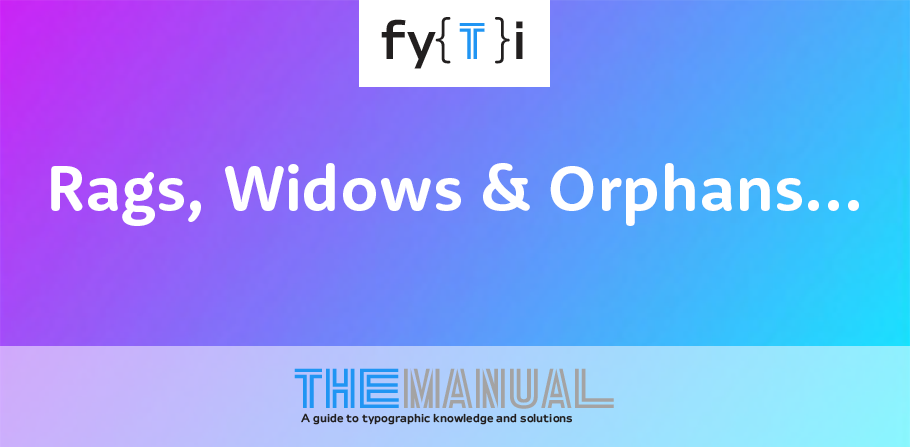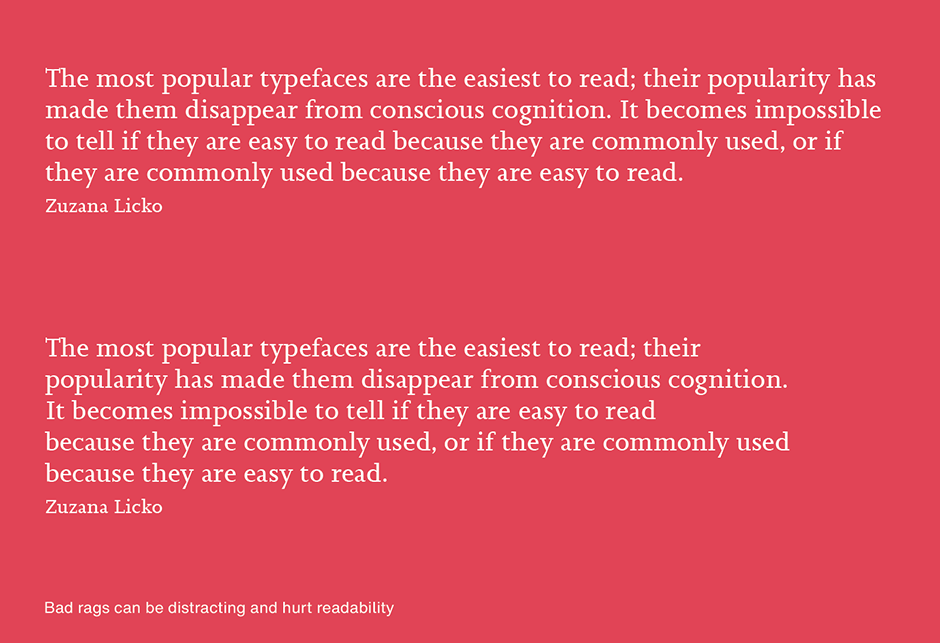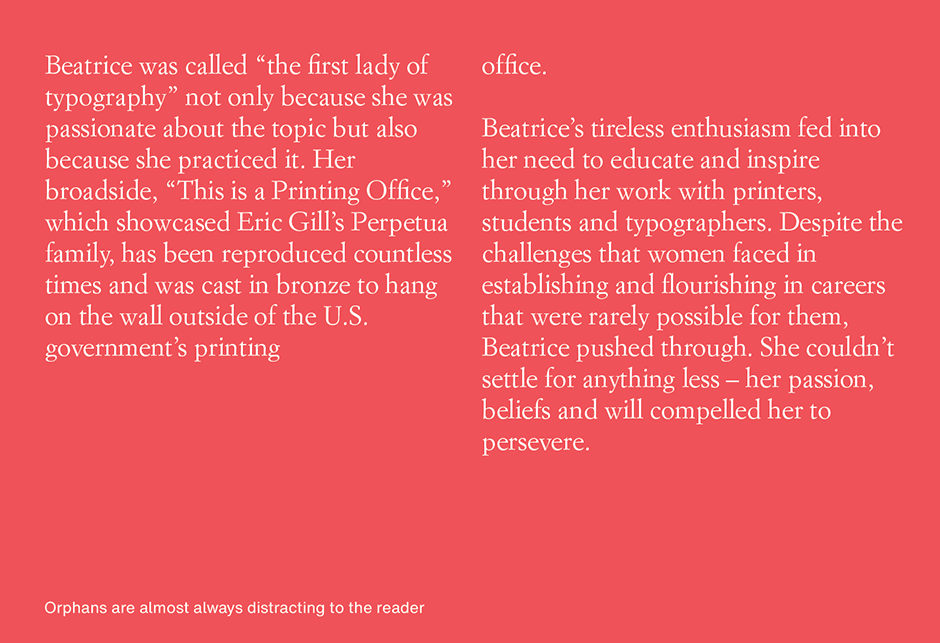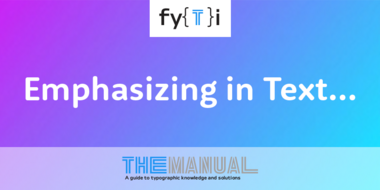Rags, Widows and Orphans

Rags
A typographic rag refers to the uneven (ragged) margin of a block of type that is not flush aligned. It’s usually the right margin that’s ragged (flush left/rag right setting), but the reverse can also occur. Flush right/rag left settings are also used in the attribution of quotes and poetry.
A good rag has small fluctuations from line to line. A rag with large and obvious fluctuations creates a block of copy that is not inviting, at best, and, at worst, can distract the reader from the content.

Hyphenation can be used to help control rags, especially in narrow line lengths. But, even with hyphenation, you can’t always rely on the line breaks generated by software to achieve an even rag. Get in the habit of reviewing, spotting and eliminating poor rags. Sometimes a small adjustment in column width or a slight rewrite of copy can correct a bad rag – but we’ll get into that a little later. If you are designing for print, a forced line break can often correct a poor rag. This is not advisable for interactive copy, however.
Widows
Widows occur when the last word, or part of a word, appears on a line by itself at the end of a paragraph or bottom of a column. A widow is considered undesirable because of the visual gap it creates between two paragraphs or at the bottom of a column. Widows are a graphic misdemeanor, but text without them is an earmark of good typography.
You can eliminate – or lengthen – the widow by reworking the rag or editing the copy.

Orphans
An orphan is similar to a widow in that it is a single word, part of a word or a very short line – but an orphan appears at the top of a column or page rather than at the end of a paragraph. The short line creates a gap that results in an interrupted alignment. Like widows, orphans are not something you want in extended copy.

About Rewrites
Many times, rags can be improved and window & orphans eliminated with a simple copy rewrite. The think is: you’ll almost always want to ask the author to either make the change, or approve yours. (You wouldn’t want a writer messing about with your design, would you?)
Web Wise
Currently, most web browsers as well as the CSS and HTML standards applied to them, provide little or no control over rags, widows, and orphans. When type appears in interactive media, avoid making any manual line breaks or adjustments to remedy or improve these aspects of your typography unless you have done your research and are certain how each platform, device and application will respond to your adjustments.
Ensuring even, unnoticeable rags and dealing widows & orphans show that you care about the reader. They are good things to care about.




